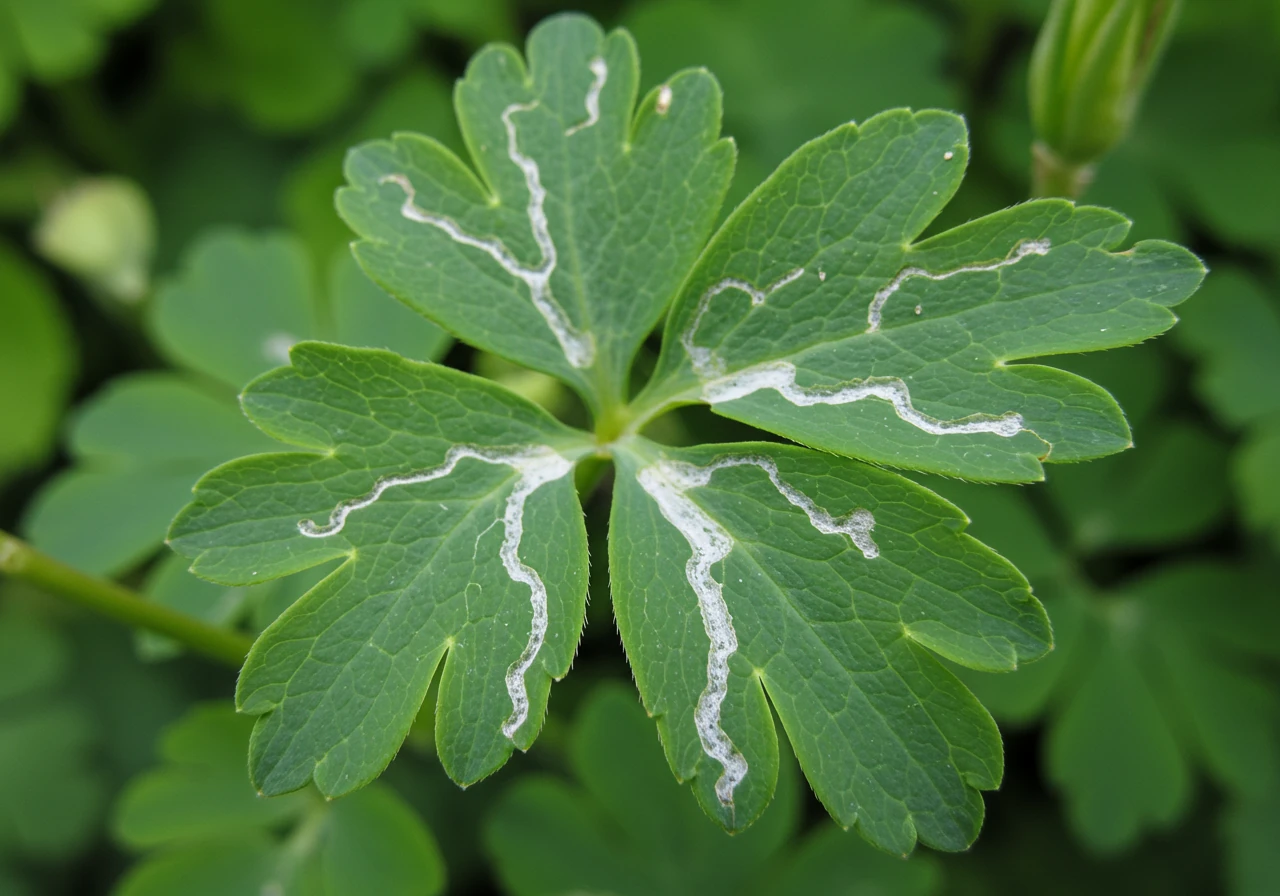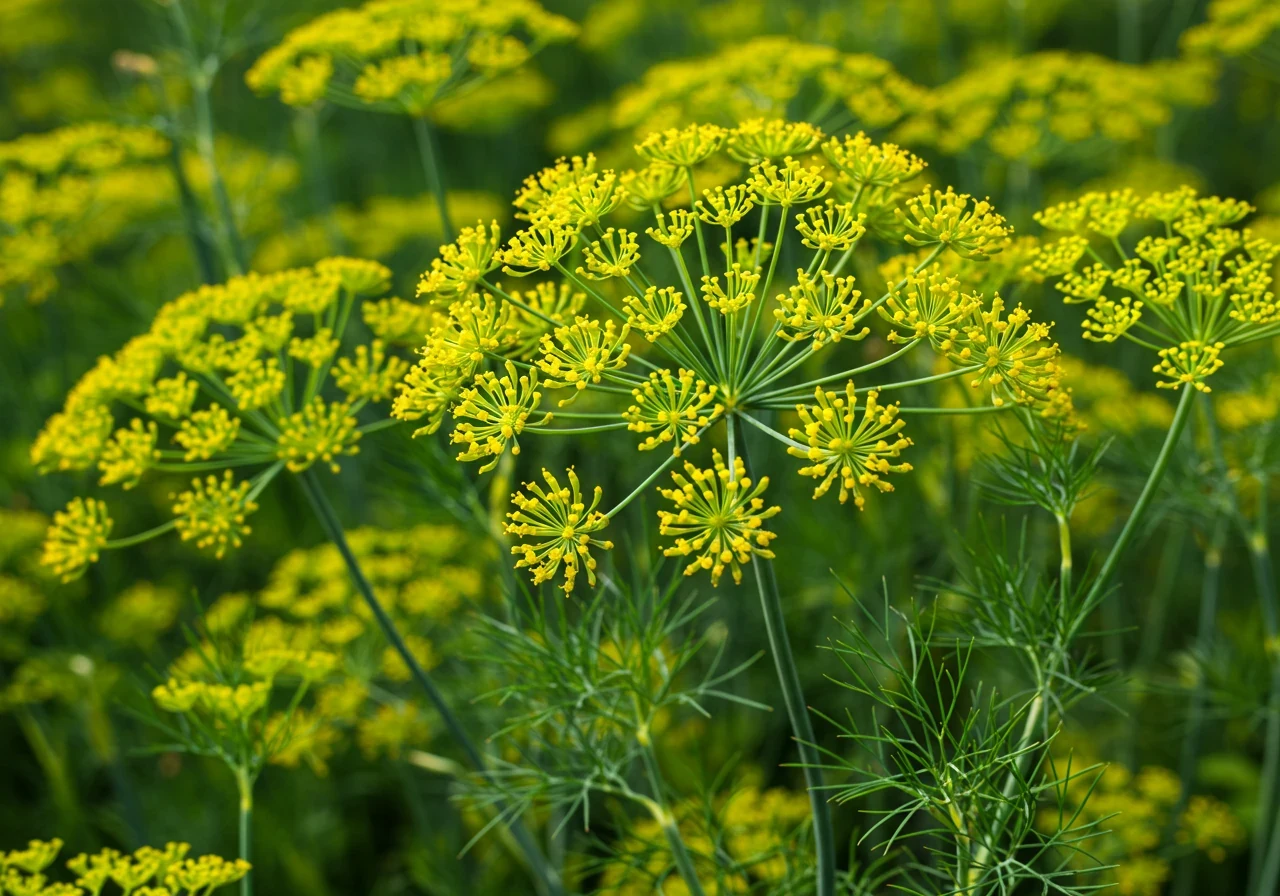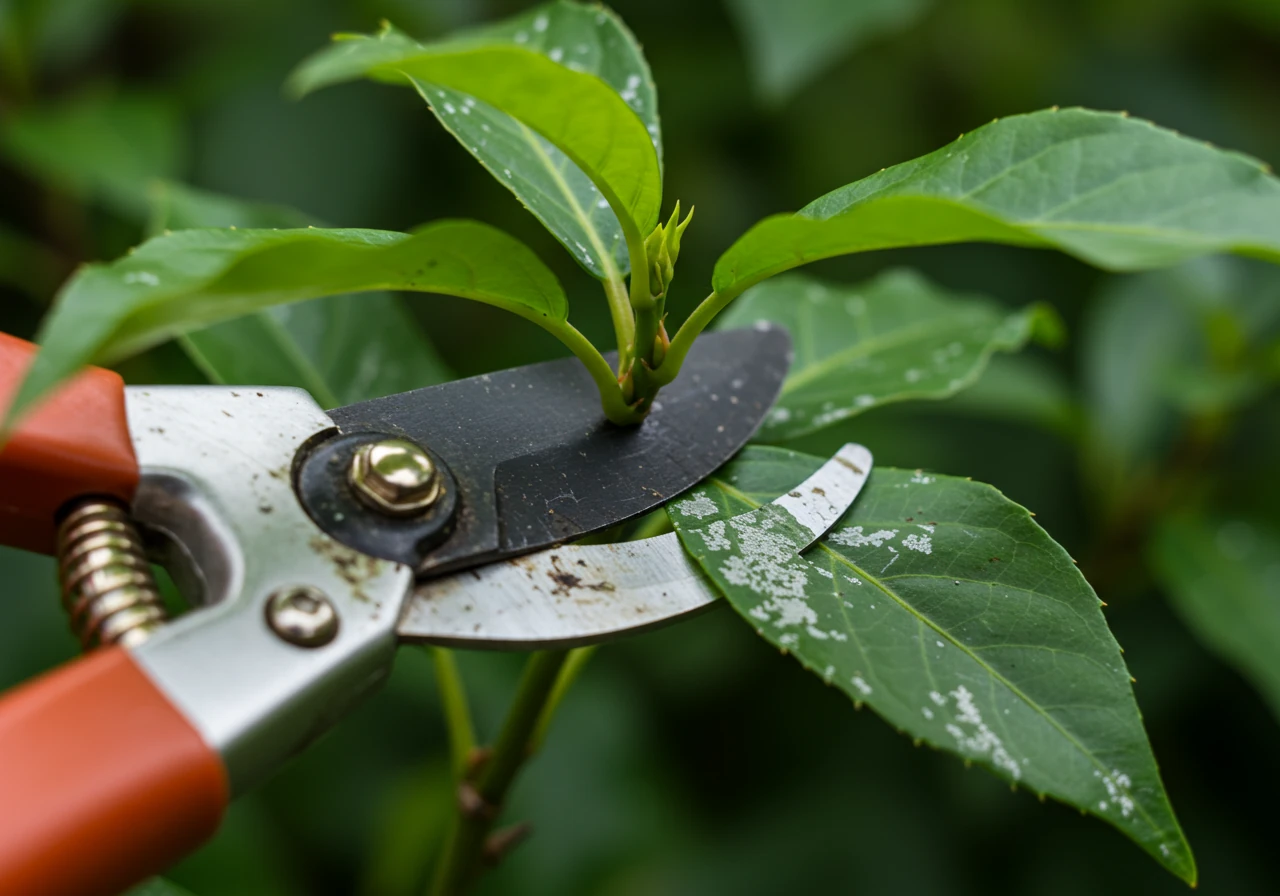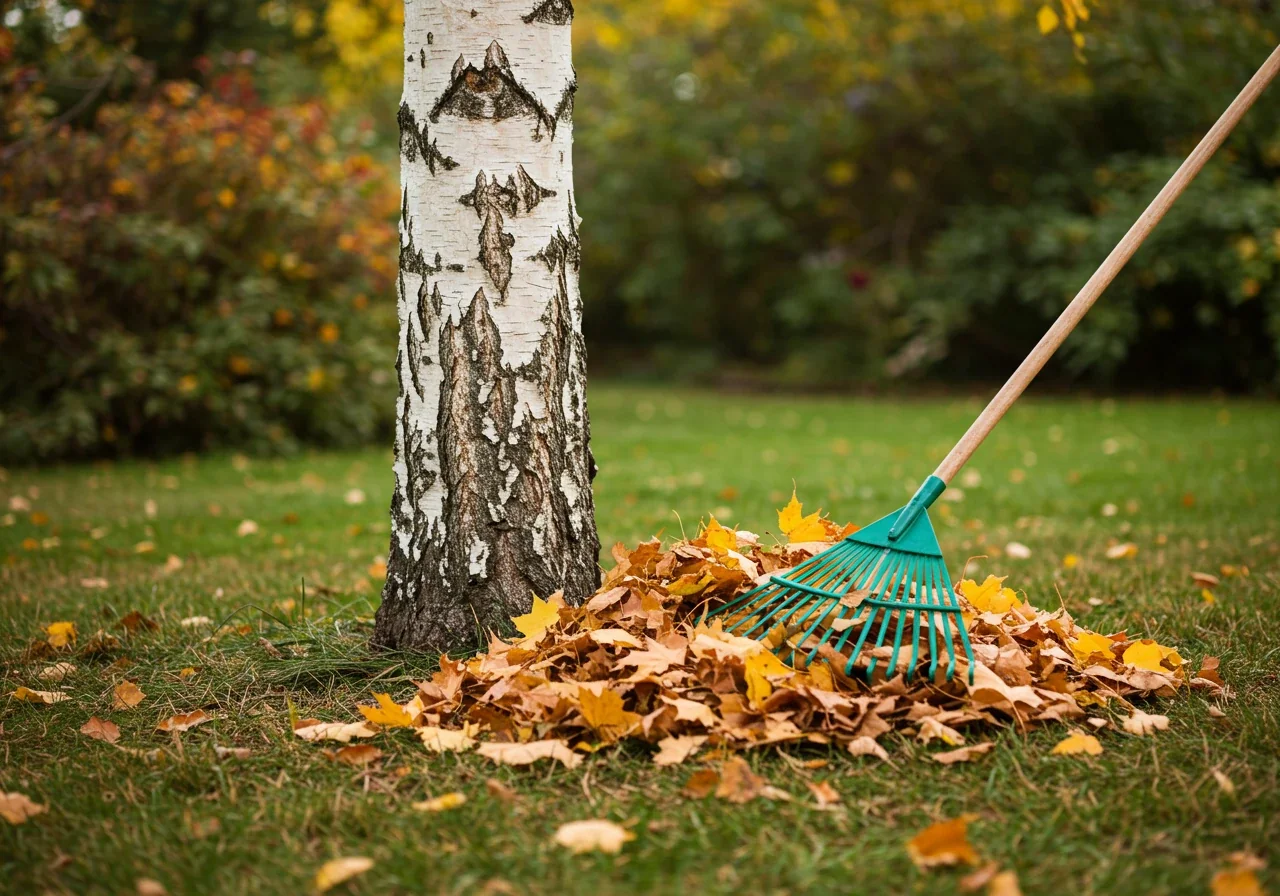Manotick Garden Health: Stop Leaf Miner Damage This Summer
Quick Guide to Stopping Leaf Miners:
- Identify: Look for winding, squiggly trails or blotches inside leaves.
- Act Early: Snip off and trash (don't compost!) affected leaves immediately.
- Prevent: Conduct thorough fall cleanups to remove overwintering pupae.
- Boost Health: Improve soil and practice good watering to strengthen plants.
- Go Natural: Attract beneficial insects that prey on leaf miners.
- Use Caution: Consider Neem oil only for severe infestations, avoiding broad-spectrum pesticides.
Introduction: Those Squiggly Lines Aren't Modern Art - Leaf Miners in Manotick!
Hey Manotick gardeners! Ever stare at your plant leaves and think, "Who's been practicing their squiggles here?" Those bizarre, winding trails aren't some avant-garde art installation popping up in your backyard landscaping. More likely, you've got tiny tenants called leaf miners! Common across Ottawa, from established gardens in Manotick to newer plantings near Kars, these little pests are actually the larvae of certain insects. They tunnel *between* the leaf surfaces, munching away and leaving those distinctive, unsightly patterns.
Now, a few 'doodles' might just look quirky, but when lots of leaf miners move in, they can really stress your favourite shrubs, trees, or vegetable plants, making them look tired and unhealthy. It’s a common headache for anyone trying to keep their landscaping looking sharp! But don't despair! This guide is your friendly neighbourhood resource. We'll help you spot these miners early, understand what makes them tick, and give you practical, actionable advice to manage them effectively. Let's work together to protect your precious plants and keep your Manotick garden looking great, squiggle-free!
Meet the Culprits: Identifying Leaf Miners and Their Damage in Your Garden
Okay, let's dive deeper into understanding these tiny tunnellers wreaking havoc in our Ottawa gardens!


Who Are These Tiny Tunnellers?
Leaf miners aren't a single type of bug; they're the *larvae* (think tiny worms or maggots) of various insects like flies, moths, or sawflies. The adult insects themselves usually don't cause much fuss. It's their kids who are the uninvited artists leaving trails on your plant leaves. The adult female lays her eggs *on* or *inside* the leaf. When the egg hatches, the larva starts munching its way *between* the upper and lower layers of the leaf tissue. Cozy, right? They live protected inside the leaf, eating the nutritious green stuff (the parenchyma, if you want to get technical) and leaving behind their characteristic "mines."
The Leaf Miner Life Cycle: A Quick Peek
It’s a pretty straightforward cycle, happening right under our noses (or rather, *in* our leaves):
- Egg: Mom lays an egg on or in a leaf. Sneaky!
- Larva: The egg hatches, and the larva starts mining, eating, and growing inside the leaf. This is the stage that causes the visible damage we see.
- Pupa: Once it’s eaten its fill, the larva pupates (transforms). This can happen inside the mine or after the larva drops to the soil below. Think of it like a caterpillar forming a chrysalis.
- Adult: A new adult fly, moth, or sawfly emerges from the pupa, ready to mate and start the cycle over again on your plants!
Spotting the Evidence: Leaf Miner Damage
Finding leaf miner damage is usually pretty easy once you know what to look for. Keep an eye out for these tell-tale signs in your garden:
- Winding, Squiggly Trails: These are the most common signs, looking like someone doodled randomly with a white, yellowish, or light green pen across the leaf surface. The trails often get wider as the tiny larva inside grows larger.
- Blotches: Some leaf miners create larger, irregular patches or "blotches" instead of thin lines. These often look pale, whitish, or eventually turn brown and dry.
- Affected Plants: In Ottawa gardens, especially areas like Barrhaven or Manotick, you might see them feasting on columbine (Aquilegia – they love this one!), birch trees, spinach, chard, tomatoes, lilacs, and various ornamental shrubs common in local landscaping.
Healthy, vigorous plants are often better at coping with minor pest issues. Ensuring good soil conditions, perhaps by learning about how to improve drainage in Manotick clay soil for thriving rain gardens, can make your plants more resilient. Similarly, plants stressed by improper watering are more vulnerable; performing regular Manotick irrigation system checks can save water and keep plants healthy.
Leaf Miners vs. Other Leaf Issues: A Quick Comparison
It's easy to mistake leaf miner damage for other problems that cause spots or discolouration. Here’s a simple guide to help you tell them apart using a responsive table:
| Issue | Appearance | Texture/Key Feature |
|---|---|---|
| Leaf Miner Trails | Winding lines or irregular blotches, often light-coloured/translucent, may turn brown. Tiny black specks (frass) possible inside. | Leaf surface usually smooth over the trail (internal damage). |
| Fungal Spots | Circular or irregular spots, distinct borders, various colours (yellow, brown, black), sometimes tiny black dots in centre. | May feel different, diseased tissue might dry/fall out ("shot hole"). |
| Insect Chewing | Actual holes through leaf or chunks missing from edges. | Obvious missing leaf tissue. No tunnels. |
| Spider Mite Damage | Tiny yellow/white speckles (stippling), faded/dusty look. Fine webbing often present, especially underneath. | Leaf surface may feel grainy; webbing visible. |
Catching leaf miners early and identifying them correctly is the first step to managing them. Part of good garden hygiene involves removing affected leaves promptly, especially on herbaceous plants. This is particularly important during autumn preparations. Incorporating leaf inspection and removal into your essential Manotick fall cleanup and winter lawn prep routines can significantly reduce the number of pests that survive the Ottawa winter. A thorough approach, like following a Manotick fall cleanup and comprehensive winter prep guide, emphasizes removing plant debris where pupae might be hiding in the soil or leaf litter. If leaf miners or other pests become widespread and managing them feels overwhelming across your landscaping, exploring professional Clean Yards lawn care and gardening services can provide expert help and tailored solutions. Visit our Google My Business page to see reviews and learn more.
Why Worry About a Few Squiggles? The Real Impact on Your Greely Garden's Health
Okay, so you've spotted those weird little trails on your plant leaves in Greely and maybe thought, "Eh, it's just a few squiggles, adds character, right?" While a lone leaf miner track might seem harmless, like a tiny bit of garden graffiti, letting these little miners run wild can actually cause some genuine problems for your plants' well-being. It's about more than just looks!
Think of your plant's leaves as its little green solar panels. They're busy collecting sunlight and turning it into energy (food!) through that amazing process called photosynthesis. But when leaf miners tunnel inside, they're eating away at the vital green tissue that does this important job. Enough tunnels, and it’s like someone has drawn all over your plant's solar panels – they simply can't make enough energy to grow strong and stay healthy.
This lack of energy puts your plant under *stress*. And just like people, stressed plants are more vulnerable. They become weaker, making them easier targets for diseases or less able to cope with challenges like drought or intense heat, conditions we sometimes experience here in the wider Ottawa region. This can affect all sorts of plants, from the flowers brightening up your front yard landscaping to the veggies you’re nurturing out back.
For your favourite ornamental shrubs and flowers, this stress often means fewer, less vibrant blooms, stunted growth, and a generally droopy, unhappy appearance. It definitely takes away from the beautiful garden picture you're trying to create! In your vegetable garden, perhaps where you’re growing tasty spinach or chard near Osgoode or even out towards Metcalfe, the impact hits closer to home – literally your dinner plate! Damaged leaves mean the plant can't produce as much food, leading to a smaller harvest. A heavy infestation can significantly reduce your yields, which can be especially noticeable in areas like Metcalfe needing property cleanup service if the pest pressure is high in the neighbourhood.
Ignoring a growing leaf miner problem allows the population to potentially explode, severely weakening plants and making it easier for the issue to spread, potentially requiring attention similar to a city property cleanup service in severe community-wide outbreaks. While you don’t need to declare war over a single squiggle, monitoring your plants and taking action when the mining becomes widespread is important for their long-term health. Simple steps like removing and disposing of heavily infested leaves (a key part of a thorough fall cleanup similar to our Manotick yard cleanup service) can make a difference. If the squiggles seem to be winning the battle across your garden, looking into professional landscaping and garden care services can help get things back on track. Investing a little effort now keeps your Greely garden thriving, and your plants will practically say thank you for protecting them!
Fighting Back the Smart Way: Eco-Friendly Leaf Miner Control Strategies


Alright, so those squiggly leaf miner trails are cramping your garden's style, and maybe even stressing your plants out. Before you reach for the heavy-duty chemicals, let's talk about fighting back the *smart* way. We're aiming for happy plants and a healthy Ottawa ecosystem, which means using Integrated Pest Management (IPM) – a fancy term for using common sense and nature-friendly tactics first! Think of it as garden jujitsu, using the pest's weaknesses against it.
1. Physical Patrol: The Squish and Snip Brigade
This is your first line of defence, especially when you first notice those tell-tale trails. It’s surprisingly effective, particularly on smaller plants or when the infestation is just starting.
How to Remove Infested Leaves:
- Inspect Regularly: Make checking your plants for leaf miner trails part of your regular garden stroll. Look closely at susceptible plants (like columbine, spinach, or birch).
- Locate the Critter: Hold the leaf up to the light. You can often see the tiny larva near the *end* of the tunnel – it looks like a tiny dark speck or bump.
- The Squish (Optional but Satisfying): If you can see the larva, gently squeeze the leaf right where it is. Goodbye, miner! This avoids removing the whole leaf if the damage is minimal.
- The Snip: If the leaf has lots of tunnels or you just want it gone, use clean scissors or pruners to snip off the entire affected leaf at its base.
- Dispose Properly: This is key! *Do not* toss infested leaves into your compost bin. The larvae can survive and complete their life cycle there. Put them in your regular garbage or yard waste bin destined for municipal pickup. Thorough removal of infested debris is a crucial part of yard hygiene, much like the work involved in a comprehensive Ottawa property cleanup service. For larger scale infestations impacting many plants, more significant cleanup might be needed, similar to dealing with accumulated garden waste addressed by a Metcalf property cleanup service.
2. Invite the Good Guys: Biological Control
Your garden is full of tiny heroes just waiting for an invitation! Many beneficial insects *love* to snack on leaf miner larvae or the adult flies/moths. The main stars are tiny parasitic wasps (don't worry, they don't sting humans!) that lay their eggs *inside* the leaf miner larvae. Creepy, but effective!
How to Attract Beneficials:
- Plant Wisely: Include flowers that provide nectar and pollen for adult beneficial insects. Good choices for Ottawa gardens include dill, fennel, cilantro (let some go to flower!), yarrow, sweet alyssum, and sunflowers. Integrating these into your garden design can be part of a new garden install project.
- Avoid Broad-Spectrum Pesticides: Strong chemical pesticides kill the good bugs along with the bad, disrupting nature's balance. Stick to targeted, eco-friendly options when absolutely necessary. Check out resources from OMAFRA for guidance on responsible pest management.
- Provide Water: A shallow dish of water with some pebbles for insects to land on can also help attract and keep beneficials around your Nepean or Barrhaven garden.
3. Least-Toxic Sprays: Use with Caution
Sometimes, especially if an infestation gets ahead of you, you might consider a spray. But we stick to the gentle giants here.
- Neem Oil: Derived from the neem tree, this oil can disrupt the insect's life cycle and deter feeding. It works best on the *larval* stage inside the leaf and might deter adults from laying eggs.
- How to Use: Mix according to label directions (always read the label!). Spray thoroughly, covering both upper and lower leaf surfaces. Apply in the evening or on a cloudy day to avoid burning leaves in direct sun. Reapply as needed, typically every 7-14 days during the pest season.
- Important Note: Neem oil can sometimes harm beneficial insects if sprayed directly on them. Use it selectively on heavily infested plants only. As with any product, it's wise to understand application guidelines, much like reviewing terms and conditions before using a service or product.
- Insecticidal Soap: This works by disrupting the outer layer of soft-bodied insects *on contact*. It's less effective against leaf miners already inside the leaf but can help manage adult populations if sprayed directly on them.
Always follow label instructions carefully when using any spray product.
Putting It All Together: Your Eco-Strategy
The best approach combines these methods. Start with monitoring and physical removal. Encourage beneficial insects by planting the right things and avoiding harsh chemicals. If needed, *cautiously* use Neem oil on specific problem plants. Remember, a few squiggles are usually okay! Healthy plants in good soil can often tolerate minor leaf miner activity. The goal isn't total annihilation but keeping the pests below a level where they cause real harm, allowing your garden to flourish and look its best – a key part of successful garden transformations. By being observant and using these earth-friendly strategies, you can keep your Ottawa garden thriving without waging chemical warfare!
Your Ottawa Leaf Miner Action Calendar: Seasonal Timing is Everything

Dealing with leaf miners is a bit like trying to catch a greased squirrel – timing is everything! These tiny tunnellers operate on their own schedule, closely tied to Ottawa’s distinct seasons. Nailing *when* to act makes all the difference between a minor nuisance and a leafy headache that takes over your landscaping. Here’s your seasonal game plan, presented as a timeline:
Early Spring (April - Early May)
What's Happening: Overwintering adults emerge, seeking tender new leaves for egg-laying (columbine, birch, spinach).
Your Action: Monitor susceptible plants, look for tiny puncture marks or early trails. Remove host weeds. Start regular garden maintenance. Consider professional help like a city garden maintenance service for consistent upkeep.
Late Spring / Early Summer (Mid-May - July)
What's Happening: Peak mining activity! Larvae hatch and tunnel, causing visible squiggles and blotches. First generation may complete its cycle.
Your Action: Vigilant inspection. Snip & trash affected leaves immediately. Plant flowers to attract beneficials. Ensure good overall lawn care to reduce plant stress. Even if planning new sod installation, keep existing plants healthy.
Late Summer / Early Fall (August - September)
What's Happening: Potential second generation activity. Larvae prepare to pupate in leaves or soil.
Your Action: Continue monitoring and snipping infested leaves. Don't slack off! Removing late-season miners reduces overwintering numbers. Think community effort – managing pests helps neighbours too!
Fall Cleanup (October - November)
What's Happening: Leaf miners settle down as pupae in fallen leaves or soil near host plants.
Your Action: *Crucial step!* Thorough fall cleanup. Rake and remove fallen leaves (esp. under infested plants). Cut back affected perennials. This physical removal disrupts the life cycle significantly. Know what's included in cleanup services by checking terms and conditions.
By tuning into the leaf miner's seasonal rhythm right here in Ottawa, you can focus your gardening efforts when they’ll have the biggest impact. This smart timing helps keep those squiggles under control and your plants looking healthy and happy!
Leaf Miner Activity Peaks (Example)
Understanding seasonal peaks helps focus control efforts.
(Note: Illustrative data showing typical relative activity)
Beyond the Miners: Building a Resilient Garden in Kenmore and Beyond
Okay, we've spent a lot of time talking about those pesky leaf miners, but let's zoom out a bit. Think of fighting pests like playing defence in hockey – stopping the puck *before* it gets near the net is way easier! The best defence for your garden, whether you're in Kenmore, out near Vernon, or anywhere in the Ottawa region, is building *resilience*. Healthy, happy plants are just naturally better at shrugging off pests and diseases, leaf miners included. It's like giving your plants superpowers!
So, how do you build this botanical resilience? It boils down to good old-fashioned garden TLC:
- Feed the Soil, Feed the Plant: Great gardens start with great soil. Ottawa area soils can range from heavy clay to sand, but almost all benefit from adding organic matter like compost. This improves drainage, aeration, and provides nutrients. Healthy soil supports strong roots, which means stronger plants. Keeping the *entire* yard tidy also helps – pests love messy hiding spots, so regular upkeep, similar to the thorough work provided by a Marionville property cleanup service, reduces overwintering sites.
- Water Wisely, Not Wildly: Plants need water, but not *too much* or *too little*. Drowning roots or drought-stressed plants are easy targets for trouble. Aim for deep, infrequent watering that encourages roots to grow down, rather than shallow, frequent sprinkles. Check the soil moisture an inch or two down before turning on the hose. The City of Ottawa offers great water conservation tips.
- Right Plant, Right Place: Choosing plants suited to your specific conditions – sunlight levels, soil type, and Ottawa's hardiness zone – is crucial. Native plants are often a fantastic choice as they're already adapted to our local climate and often more resistant to local pests. Groups like Landscape Ontario can offer plant selection resources.
- Keep Calm and Garden On: Reduce plant stress wherever possible. This means avoiding damage from lawnmowers or string trimmers, ensuring good air circulation (don't overcrowd plants!), and generally providing consistent care. A holistic approach, including proper lawn care, contributes to a less stressful environment for your garden plants too. Proactive care prevents minor issues from escalating into problems needing a full city garden clean up service.
Building a resilient garden isn't about eliminating every single bug; it's about creating an environment where your plants can thrive and defend themselves. If you're facing ongoing challenges or want personalized advice for your specific garden situation, we'd love to hear from you – feel free to share your experiences using our Estimate & Feedback form. You can also review our Privacy Policy to see how we handle your information. Strong, healthy plants are your best defence against leaf miners and a host of other garden woes!
Key Insight: Healthy Soil = Healthy Plants!
Investing time in improving your soil with compost and organic matter is one of the single best things you can do for long-term garden health and pest resistance.
Quick Tips: Your Leaf Miner Cheat Sheet
Feeling a bit overwhelmed by those leafy little lane-drawers? Don't sweat it! Here’s your quick-reference guide to keeping leaf miners in check. Think of it as your secret weapon for happier plants in Ottawa and beyond.
Easy peasy! Get your garden detective hat on and inspect those leaves closely. As soon as you spot those tell-tale tunnels, snip off the affected leaves right away using clean scissors or pruners. The key is *early* action. Catching them before the larva matures and leaves the leaf (or the leaf falls) is your best bet. It’s garden triage, pure and simple!
Hold on there, partner! Tossing infested leaves into your compost bin is like sending the leaf miner larvae to a cozy bed & breakfast to finish growing up. Nope, you want to bag those snipped leaves securely and put them straight into your regular garbage bin. Proper disposal is critical to break the life cycle. If you've got a widespread issue, especially after the growing season, getting serious about debris removal, much like the thorough work involved in our Metcalf garden clean up service, is essential to reduce overwintering pests.
Prevention is the name of the game! First, a *thorough* fall cleanup is your best friend. Rake up and dispose of fallen leaves, especially under plants like birch or columbine that are miner favourites. This removes overwintering pupae hiding in the debris. Second, build healthy soil! Strong plants are less attractive targets. Using quality compost or considering appropriate mulching and edging helps retain moisture, suppress weeds, and can even deter some ground-pupating insects. Thinking about the right landscaping materials selection from the start, like resistant plant varieties, can also make a big difference.
Absolutely! Your garden is like a tiny city, and you want to invite the good neighbours. Tiny parasitic wasps (don't worry, they're harmless to us!) are natural enemies of leaf miners. Attract them by planting flowers they love, like dill, fennel, yarrow, or sweet alyssum. Avoid using harsh chemical pesticides, as these kill off the beneficial insects along with the pests. Let nature do some of the heavy lifting for you! Keeping your garden clean and inviting for these helpers, maybe with a service similar to our Marionville garden clean up service if things get overwhelming, creates a better environment for them.
Hey, sometimes you need reinforcements! If leaf miners (or any other garden puzzle) have you scratching your head, don't hesitate to reach out. We're here to help with tailored advice and services for your specific Ottawa-area garden needs. Feel free to share details about what you're seeing or request assistance through our Estimate & Feedback form – we'd love to help you get your garden back to looking its best! We also offer services like Ottawa yard cleanup service and specific area cleanups like for Metcalf, Marionville, and general city yard cleanup.
Manotick Leaf Miner FAQs: Your Questions Answered
Got questions about those little leaf artists making squiggles all over your garden? You're not alone! Here are some common queries we hear from folks dealing with leaf miners in Manotick and the greater Ottawa area.
You bet there is! Think of late spring and early summer (usually mid-May through July) as peak leaf miner season here in the Ottawa region. As temperatures warm up after our lovely winters, the adult flies or moths emerge and start laying eggs on tender new leaves. You'll see the most mining activity then. Some species might even have a second go later in the summer, so keep an eye out! Your best bet is to start watching susceptible plants as soon as they leaf out in spring and continue monitoring through August. Early detection is half the battle!
Your neighbour isn't wrong – columbines (Aquilegia) are definitely a five-star restaurant for certain leaf miners! Other common targets in Ottawa landscaping include birch trees, lilacs, spinach, chard, and some types of aster. However, "doomed" is a strong word! While these plants are more susceptible, keeping them healthy with good gardening practices makes a huge difference. Strong plants can often tolerate some mining without serious harm. If you're planting new beds, you might choose less susceptible varieties, but even favourites can thrive with a little extra attention.
Great question! They're pretty sneaky survivalists. Most leaf miners spend the winter snuggled up in their pupal stage – think of it like their version of a sleeping bag. They hide either just beneath the soil surface, often right under the plants they were munching on, or tucked away in fallen leaves and garden debris. This is why a *thorough* fall cleanup is so incredibly important! Raking leaves and removing dead plant matter gets rid of many of these overwintering pupae before they can emerge in spring. Think of the meticulous work involved in a professional cleanup, like our Marionville yard cleanup service; applying that level of detail to your own yard, especially around affected plants, really disrupts their life cycle. Our general property clean up services cover this.
Definitely not! While it's tempting to reach for a quick fix, harsh chemicals often cause more problems by harming beneficial insects (the good guys!). Start with the simple stuff: snip off and *dispose* (in the trash, not compost!) of infested leaves as soon as you see them. Encourage natural predators like parasitic wasps by planting things like dill or yarrow. If things get really bad on a specific plant, Neem oil can be a less toxic option used carefully. But honestly, the *best* long-term strategy is building strong, healthy plants that can fend for themselves. Investing time in proper soil preparation gives your plants the foundation they need to resist pests naturally. It aligns with our whole approach – working *with* nature for a healthy yard, something you can learn more about on our About Us page. Consider our Ottawa garden clean up service for assistance.
The adult leaf miners *can* fly, so yes, they can move between yards. However, a healthy, well-maintained garden is much less appealing to them. Stressed plants are easy targets. Keeping your own garden tidy, removing potential host weeds promptly, and maintaining healthy plants makes your yard less inviting. Good practices like proper mulching and edging not only make your landscaping look sharp but also help reduce weeds and potential hiding spots for pests around your garden beds, creating a less welcoming environment overall. While you can't control your neighbour's yard, focusing on resilience in your own space goes a long way. Our city garden clean up service focuses on creating these clean, resilient spaces.
Keep Your Manotick Garden Green and Healthy This Summer!
So there you have it – your crash course on dealing with those little leaf-scribbling critters! Remember, keeping your Manotick garden looking its best doesn't have to feel like a full-time battle. By understanding leaf miners, acting smart (and early!), focusing on healthy soil and plants, and timing your efforts with Ottawa's seasons, you can significantly reduce their impact. It’s all about working *with* nature, not against it, to build a resilient, beautiful outdoor space. Think of it as proactive garden wellness!
But hey, we get it. Sometimes life gets busy, or a pest problem feels overwhelming. Maybe you're in Greely wrestling with stubborn weeds, Nepean dealing with patchy grass, or Richmond needing a full garden refresh. If those squiggles are winning, or you just want expert eyes on your landscaping challenges, Clean Yards is here to help! We understand the specific needs of gardens throughout the Ottawa area, from Manotick out to Metcalfe.
Don't let pests stress you or your plants out! Get in touch for a personalized assessment. We can help diagnose the issue and recommend the best course of action for your unique garden.
Ready to hand over the reins or need a bigger garden rescue? Contact us today to discuss our garden care and landscaping services. Let us handle the hard work so you can simply enjoy your beautiful, healthy Manotick yard. Give us a call, send an email, or fill out our online form – we look forward to hearing from you!

